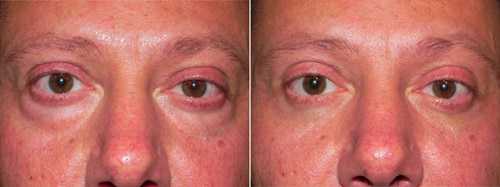A laser is a great tool to use when performing surgery. Carbon Dioxide or CO2 lasers have the ability to seal both vessels and nerves when used in surgery, and this results in less bruising and less pain for my patients afterwards.
The reason CO2 lasers can seal blood vessels and nerves is because of the nature of the CO2 wavelength of 10,600 nanometers. CO2 is a slightly inefficient beam which spills over extra heat in the wound when cutting through tissue. This extra heat is helpful in sealing small blood vessels and small nerves such as those encountered during laser eyelid surgery, otherwise know as laser blepharoplasty surgery. This results in a relatively bloodless surgery and, amazingly, afterwards patients usually report almost no pain and no bruising.
One question we often hear when speaking about laser eyelid surgery or laser blepharoplasty surgery is why stitches or sutures are necessary when performing surgery with a laser. The answer lies in understanding the different uses for lasers in surgery. For instance, when I treat eyelid Festoons and Malar Mounds with an Erbium laser, there are no cuts made in the tissue and therefore no sutures or stitches are necessary.
In contrast, when using the CO2 laser to remove extra skin and fat in the upper lid during upper lid blepharoplasty surgery, the nature of the cut and the movement of the eyelids after surgery do require sutures to keep the wound edges together and allow the skin to heal best after surgery.
On the other hand, when the CO2 laser is used to remove or reposition fat in the lower eyelid using an incision inside the lower eyelid (also known as a transconjunctival approach), the mechanics of the wound inside the lower eyelid keep the wound edges close together without the need for sutures or stitches, so they are not necessary when I perform lower eyelid surgery with a laser.
When sutures are used in the upper lids, they often are removed around 10 days after surgery and, because of the sealed nerve endings by the laser during surgery, their removal is surprisingly easy and painless.
